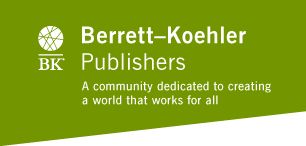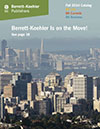For media inquiries, contact Cynthia Shannon at cshannon@bkpub.com
The Pause Principle - By Kevin Cashman
The pace of work, the pressure to perform and the speed of our interconnected world have never been greater. The constantly wired, instantly reactive, multi-tasking, everything-coming-at-us-at-once world has stretched everyone to our limits, and we have begrudgingly accepted this as “the new normal.” But could it be that going faster and driving harder to keep up are not the answers? Is our dedication to speed and action actually counterproductive?
Bestselling author Kevin Cashman, who has 25 years of experience coaching CEOs and top executives, argues that a leader’s most powerful weapon against these crushing forces is the one thing they resist the most: pause. In his new book THE PAUSE PRINCIPLE: Step Back to Lead Forward (Berrett-Koehler; September 24, 2012), Cashman offers an antidote to our addiction to speed and transaction, replacing it with a conscious, intentional process of stepping back to consider and deliberate, and then lead forward with greater clarity, momentum, and impact. Rather than merely doing more, we must learn to pause—to reflect— and do things differently in order to grow, achieve and innovate. In the book, Cashman provides the reader with real tools and practices to make pause a pragmatic practice of deep, reflective inquiry for focused problem-solving, or a break to make space for new insights to emerge. All of these practices lead to purposeful change, and contribution, an essential part of a leader’s everyday life.
“In our fast-paced, achieve-more-now culture, the loss of pause potential is epidemic,” writes Cashman. “If leaders today do not step back, to stop momentum, to gain perspective, to transcend the immediacies of life, and to accelerate their leadership, we will continue to crash economically, personally and collectively.”
The author of the breakout bestseller Leadership From the Inside Out, Cashman has helped thousands of leaders around the globe to learn to pause in order to gain clarity, reconnect with purpose and drive performance. As founder and CEO of LeaderSource, ranked one of the top three firms in leadership development globally, he founded the Executive to Leader Institute, a “laboratory for pause.” In 2006, LeaderSource was acquired by the world-renowned Korn/Ferry International, where Cashman now serves as Senior Partner, CEO & Executive Development, advising CEOs and senior teams. He has founded the Chief Executive Institute—a comprehensive, integrated, globally delivered leadership development and coaching program for CEOs and CEO successors— and he has been ranked as a top 10 thought leader by Leadership Excellence magazine for several years.
Cashman’s work centers around one simple truth: that fast thinking is the domain of management transaction, while slow thinking is the leadership domain of strategic, innovative transformation. He believes every leader is on a journey from being a transaction-focused manager to an authentic leader that inspires real change. At the core of this transformation is the ability to pause. But for most, slowing down to drive performance is counter to instinct, especially when they have thus far been rewarded for speed and action. But stepping forward to act, particularly in complex situations, without first stepping back for information, clarity, and connection to what is most important can be disastrous.
In THE PAUSE PRINCIPLE, Cashman argues that pausing to gain fresh perspective and transcend immediacies is the key to leadership excellence in today’s complex world that won’t slow down. He draws on real-life business case studies, a variety of current research sources, CEO and executive interviews, and personal stories to illustrate the profound impact of pausing – with examples from Novartis, Interface, and General Mills to firefighters, the city of São Paulo, Steve Jobs and Albert Einstein. These examples illustrate how pause powers purposeful performance and growth in the three critical areas of leadership:
- Grow Oneself: Pause to grow to the next level of personal leadership through self-awareness, character, and purpose. This is an inside-out process of growing the whole person to grow the authentic leader.
- Grow Others: The real measure of leadership is the character and quality of the people the leader and the organization produces. By pausing to develop others, a leader will derive great energy and fulfillment from seeing the next generation, and the organization, succeed.
- Grow Cultures of Innovation: Growth in the first two areas provides the foundation for a culture of continuous growth, creativity and innovation. Most organizations have no lack of hyperactivity, but they are often sorely lacking in transformative thinking. By establishing a culture that values the power of pause, organizations will be better positioned to capitalize on the forces and ideas that point toward new ways forward.
This growth is an inside-out and outside-in process of transformation beginning with the self, moving to others, and then to cultures of innovation. Cashman applies this “pause and grow” approach to each critical area, and uses Seven Pause Practices as a framework for guiding a leader’s mindset and behavior in each area (see attached). These principles and framework will afford leaders more examination, higher-order logic, rational analysis, more profound questioning, deeper listening, higher-quality presence, broader perspective, greater openness to diverse thinking and input, and ultimately more impactful, influential and innovative action.
By learning when, why, and how to step back, leaders will gain their innate power to go to the higher levels. Pause powers purposeful performance. With THE PAUSE PRINCIPLE, management speed and transaction can become leadership significance and transformation.
 0 items in cart
0 items in cart









